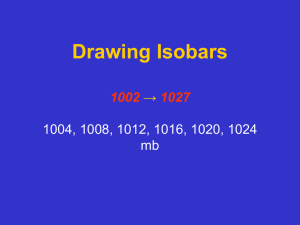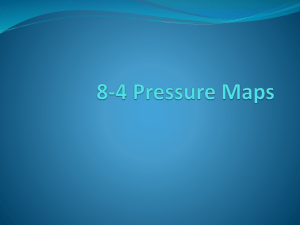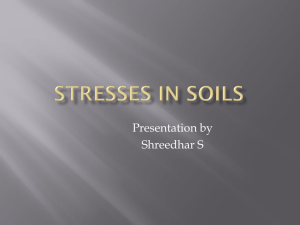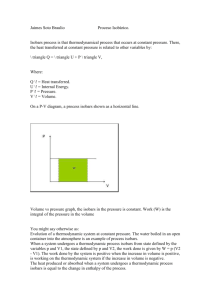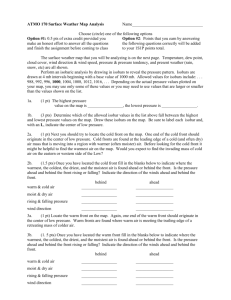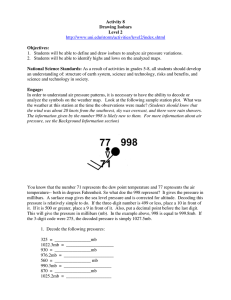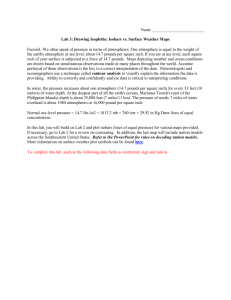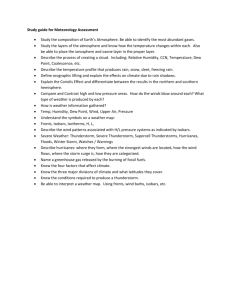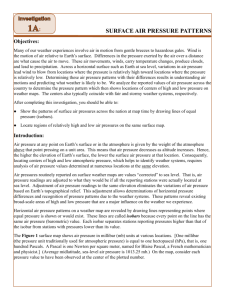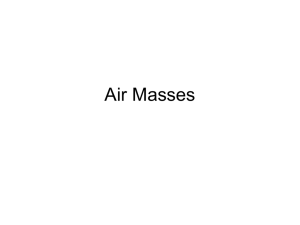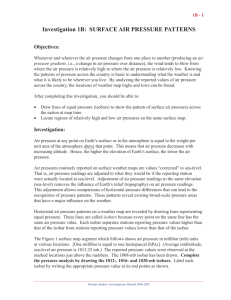Mapping Air Pressure
advertisement
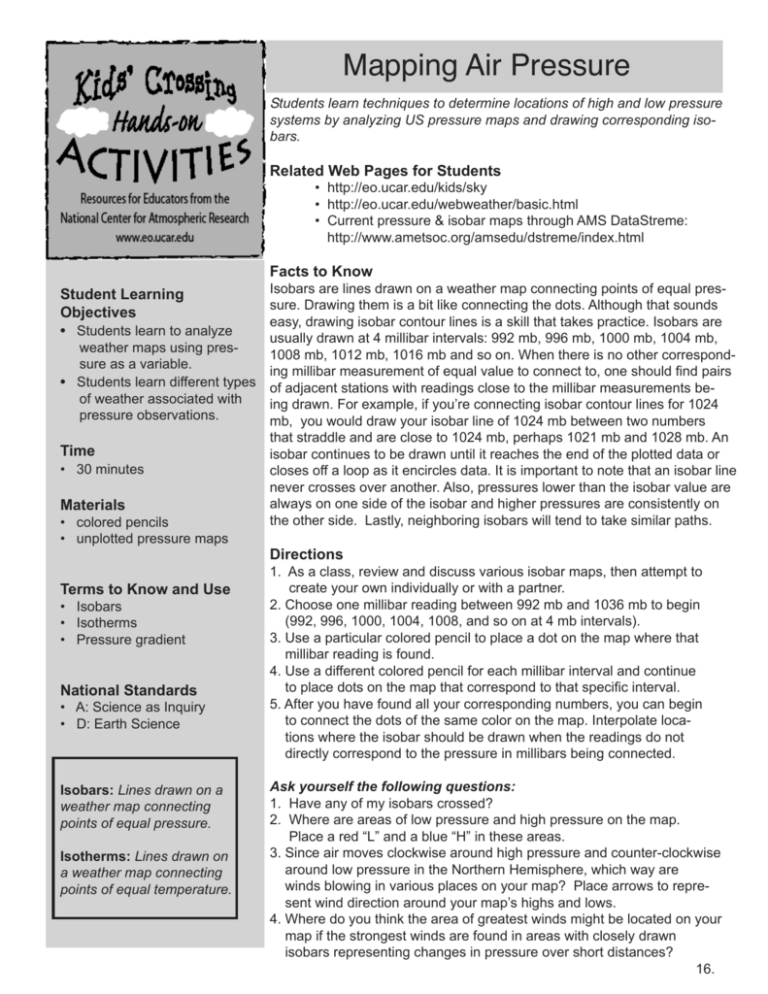
Mapping Air Pressure Students learn techniques to determine locations of high and low pressure systems by analyzing US pressure maps and drawing corresponding isobars. Related Web Pages for Students • http://eo.ucar.edu/kids/sky • http://eo.ucar.edu/webweather/basic.html • Current pressure & isobar maps through AMS DataStreme: http://www.ametsoc.org/amsedu/dstreme/index.html Facts to Know Isobars are lines drawn on a weather map connecting points of equal pressure. Drawing them is a bit like connecting the dots. Although that sounds easy, drawing isobar contour lines is a skill that takes practice. Isobars are usually drawn at 4 millibar intervals: 992 mb, 996 mb, 1000 mb, 1004 mb, weather maps using pres1008 mb, 1012 mb, 1016 mb and so on. When there is no other correspond sure as a variable. ing millibar measurement of equal value to connect to, one should find pairs • Students learn different types of adjacent stations with readings close to the millibar measurements be of weather associated with ing drawn. For example, if you’re connecting isobar contour lines for 1024 pressure observations. mb, you would draw your isobar line of 1024 mb between two numbers that straddle and are close to 1024 mb, perhaps 1021 mb and 1028 mb. An Time isobar continues to be drawn until it reaches the end of the plotted data or • 30 minutes closes off a loop as it encircles data. It is important to note that an isobar line never crosses over another. Also, pressures lower than the isobar value are always on one side of the isobar and higher pressures are consistently on Materials the other side. Lastly, neighboring isobars will tend to take similar paths. • colored pencils • unplotted pressure maps Student Learning Objectives • Students learn to analyze Directions Terms to Know and Use • Isobars • Isotherms • Pressure gradient National Standards • A: Science as Inquiry • D: Earth Science Isobars: Lines drawn on a weather map connecting points of equal pressure. Isotherms: Lines drawn on a weather map connecting points of equal temperature. 1. As a class create your own individually . 2. Choose one millibar reading between 992 mb and 1036 mb to begin (992, 996, 1000, 1004, 1008, and so on at 4 mb intervals). 3. Use a particular colored pencil to place a dot on the map where that millibar reading is found. 4. Use a different colored pencil for each millibar interval and continue to place dots on the map that correspond to that specific interval. 5. After you have found all your corresponding numbers, you can begin to connect the dots of the same color on the map. Interpolate loca tions where the isobar should be drawn when the readings do not directly correspond to the pressure in millibars being connected. Ask yourself the following questions: 1. Have any of my isobars crossed? 2. Where are areas of low pressure and high pressure on the map. Place a red “L” and a blue “H” in these areas. 3. Since air moves clockwise around high pressure and counter-clockwise around low pressure in the Northern Hemisphere, which way are winds blowing in various places on your map? Place arrows to repre sent wind direction around your map’s highs and lows. 4. Where do you think the area of greatest winds might be located on your map if the strongest winds are found in areas with closely drawn isobars representing changes in pressure over short 16. Note: These maps have been created to show only air pressure. Often, additional station weather information is shown.
